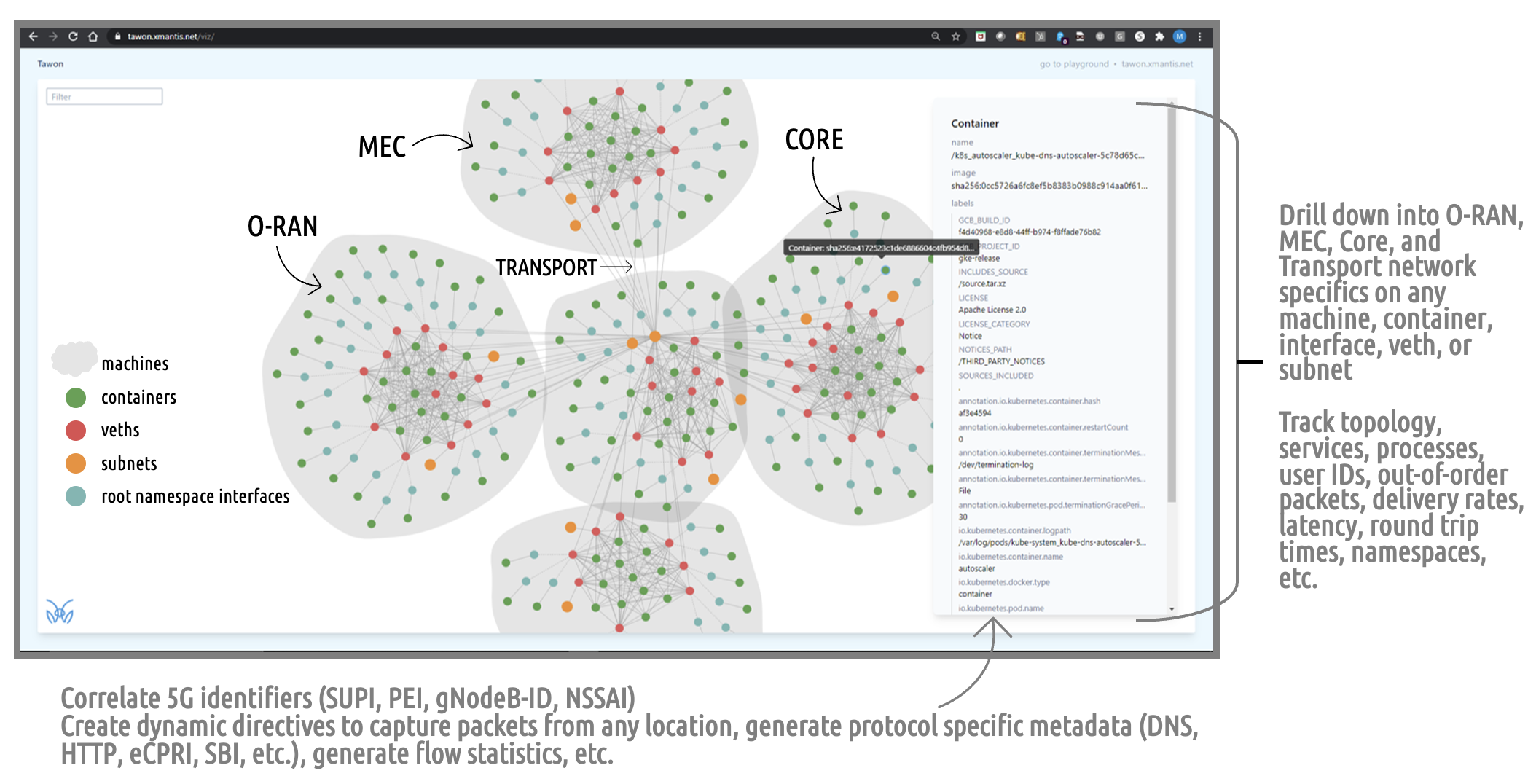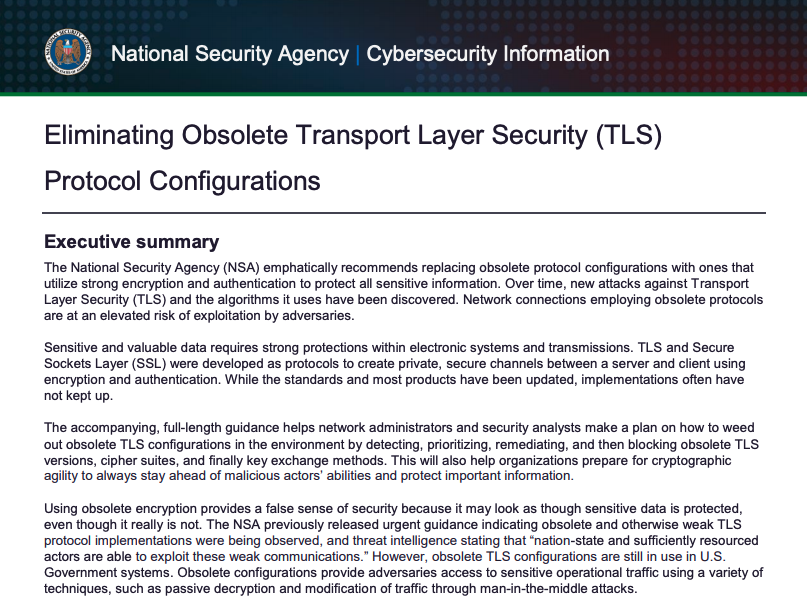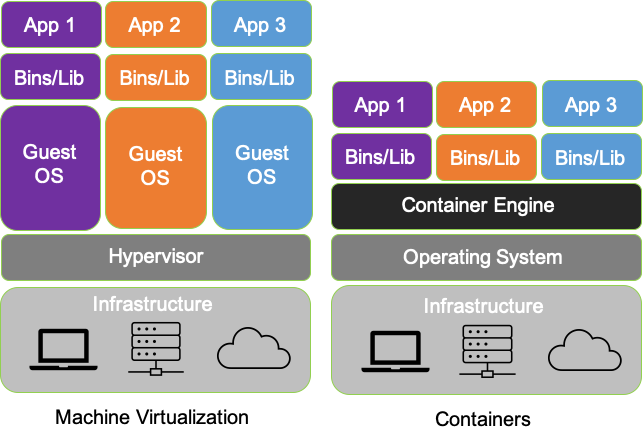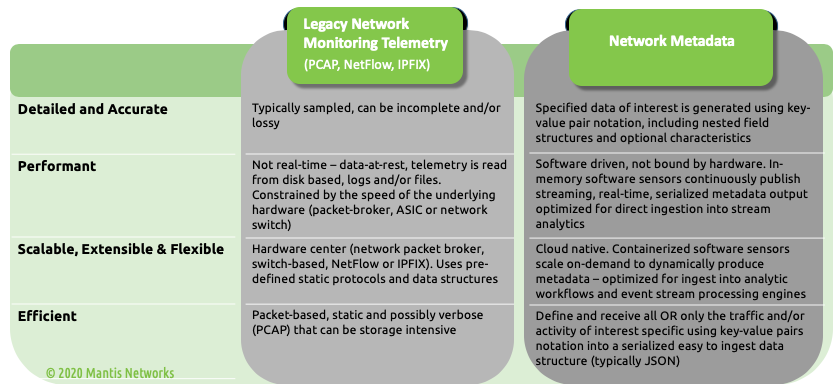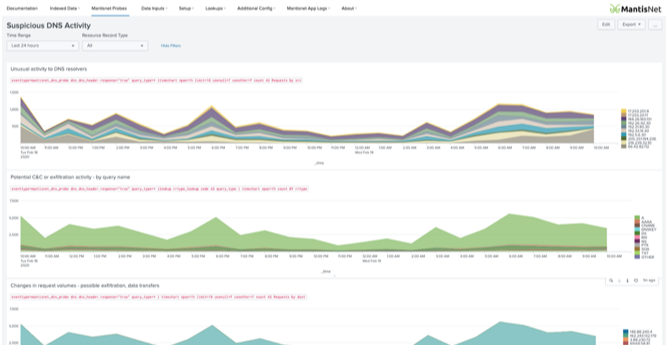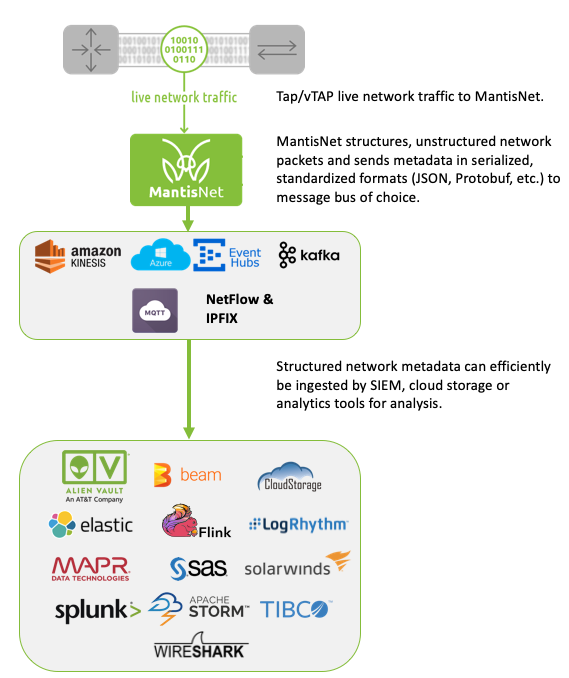How to Get Visibility into 5G SA Ephemeral and Cloud-native Network Resources
Cloud native and containerized architectures are becoming the de facto design standard for 5G networks and applications. In the telecommunications industry, the players are focused on building out 5G Stand Alone (SA) deployments to deliver the promise of faster connection speeds to enable IoT, medical, autonomous use cases - not to mention improved communications, support the streaming of real-time content and the promise of a myriad of new applications and services. As we work with Tier 1 operators, MVNOs and analytics providers we are encountering a staggering issue: they can no longer adequately monitor, correlate, and measure critical network and application communications events at the container level and across the infrastructure.
Read More
Tags:
Real-Time Monitoring,
mantis,
cybersecurity,
cloud native network function,
5G
The recently announced NSA "instructions for National Security System (NSS), Department of Defense (DoD) and Defense Industrial Base (DIB) system administrators on how to detect, prioritize and replace unauthorized or deprecated TLS protocols with ones that meet current standards.”
Encrypting communications is one of the most critical tools for protecting data. However, if older and out-of-date encryption protocols are in use, that presents a vulnerability that could be exploited to gain access to systems or networks. Updating to the latest TLS 1.3 and the heavily supported TLS 1.2 along with compliant cipher suites and strong authentication is recommended.
Read More
Tags:
cyber security,
Real-Time Monitoring,
mantis,
cybersecurity
In our last post “Introducing the MantisNet CVF: Solving Cloud Native, Serverless, Observability Challenges“ we provided an overview of the Containerized Visibility Fabric (CVF) capabilities and made some assertions about how revolutionary and disruptive cloud-native technologies are, the resulting opacity problems, as well the art of the possible insofar as enabling next-generation observability.
In this installment we’ll go into more detail as to what exactly we mean by cloud-native observability as well as the significance, deeper implications of it, interoperability and investment protection. So, let’s revisit containerization, and by extension, why cloud-native observability is so revolutionary.
Read More
Tags:
Real-Time Monitoring,
Data-In-Motion,
mantis,
cybersecurity,
containers,
cloud native network function
Solving the opacity problem - Bringing clarity to traffic obscured by encryption.
There are many reasons that the use of encryption will continue to increase as it provides a method of privacy and security of communications and lowers the risk of information loss. However, encrypted session traffic does pose a challenge in achieving visibility and observability of network events for day-to-day operational management, risk detection and response, and lawful intercept scenarios.
How can teams better leverage the information contained in encrypted network traffic sessions for real-time network visibility?
Read More
Tags:
Real-Time Monitoring,
Data-In-Motion,
mantis,
cybersecurity,
containers
As we’ve shared previously - networks are the circulatory and nervous systems of your enterprise. Indeed; “the network is the computer”, and networks are an invaluable source of ground-truth. From a communications perspective, you can learn a lot by directly observing who is speaking, to whom they are speaking, the language they are using, the tone of voice, and the content of the communications. When it comes to network communications and metadata the analogies are obvious: in the case of DNS traffic- mapping URLs into IP addresses, and identifying underlying services and connected devices - in the case of TLS protocol, getting detailed insights into the encryption capabilities and device characteristics - likewise the GTP protocol provides geo-location specific information, and in the case of the MODBUS protocol, understanding the communications within industrial control systems.
Read More
Tags:
Real-Time Monitoring,
Data-In-Motion,
mantis,
cybersecurity
Announcing the MantisNet Network Stream ProcessorSM App for Splunk
We’re excited and proud to announce that the MantisNet Network Stream ProcessorSM (NSP) App for Splunk is now available.
The App enables ingestion of streaming network metadata using key-value pairs: a powerful, new form of serialized metadata produced by MantisNet sensors. Customers can now access, integrate and manage these new forms of lossless, ultra-efficient, ultra-accurate and high-resolution metadata, to support continuous real-time network detection and response in Splunk.
Read More
Tags:
Real-Time Monitoring,
DNS Monitoring,
Data-In-Motion,
mantis,
cybersecurity
DNS. A necessary mechanism that makes global network communications work, connecting services to the internet or private network, thereby powering our digital lives can also present confounding and problematic engineering challenges with cybersecurity implications. Site not responding, nefarious applications, applications not resolving, broken network connectivity…many initial responses are Is it DNS? it’s DNS, “It’s always DNS”.
DNS, the domain name system, connects domain names to IP addresses that locate and route information and traffic from a source location to a client can be the bane of many network and cybersecurity engineers as they maintain networks or investigate potential threats on the network.
We’ll look at this critical network component, its threat value and how you can make DNS an actionable component
Read More
Tags:
network preformance,
cyber security,
IT operations,
Real-Time Monitoring,
DNS Monitoring,
mantis,
cybersecurity
Digital transformation and the growing complexity of IT environments present new vulnerabilities that can be exploited by attackers for reconnaissance, delivering malicious payloads or to exfiltrate data. Using live network traffic for analysis to expose hidden malicious or anomalous activities and security threats among the complexity is fundamental for improved detection and response. So much so, that Gartner recently published an inaugural market guide for network traffic analysis (NTA), to help organizations understand what to look for (more on that later).
What is network traffic analysis (NTA)?
Network traffic analysis uses network communications and their protocols for detection, identification and analysis of cybersecurity threats and potential operational issues. As you’ll read, we propose doing this in real-time, with wire-speed network data and analytics to meet the demands of digital business and to gain an edge on reducing mean time to detect (MTTD) / mean time to respond (MTTR).
Read More
Tags:
cyber security,
Real-Time Monitoring,
mantis,
cybersecurity
As technologies advance and enterprise networks expand, administrators accountable for the overall health and performance of infrastructure accumulate more and more responsibility. CIOs are continually analyzing the problem of how to better monitor and secure the activity within their organization’s network.
Read More
Tags:
Real-Time Monitoring,
Data-at-Rest,
Data-In-Motion,
cybersecurity


